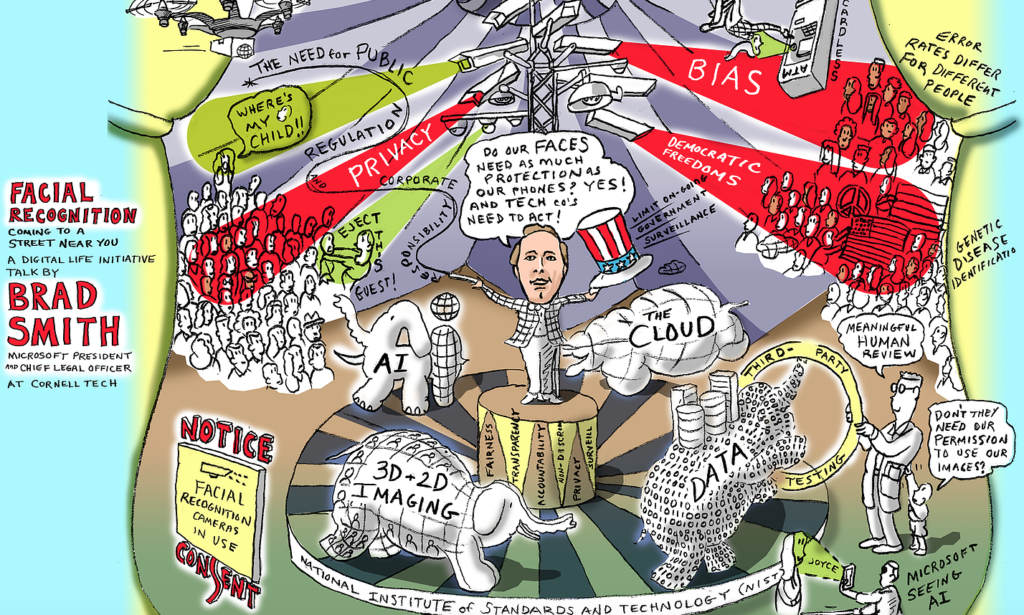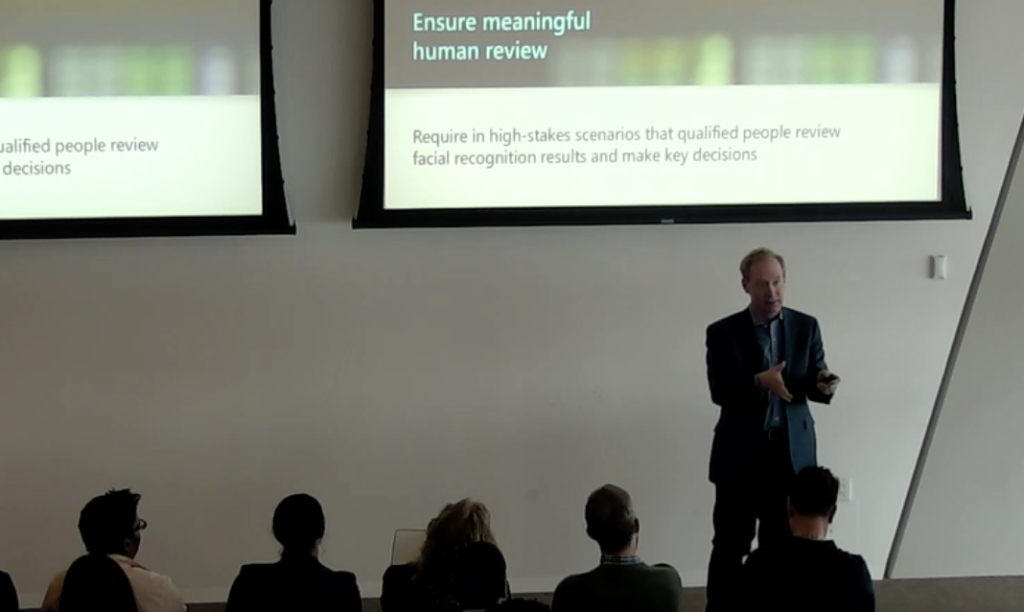INFO 601-02 ASSIGNMENT 3: EVENT ATTENDANCE BY MICHAEL LEWIS
Having an interest in inclusive design by Microsoft, I decided to go to the Digital Life Seminar event curated by Cornell University. The topic of the seminar is Facial Recognition: Coming to a Street Near You. The special guest that will be talking in this event is the President of Microsoft, Brad Smith. The Digital Life Seminar is a weekly event produced by internal members of Cornell University, which also invites different special guests every week.

The Seminar started with one of the faculty of Cornell introducing the topic of the day and welcoming Brad Smith to the stage. Brad began the seminar by explaining the very basic definition of facial recognition. He believes that facial recognition to human, is a natural skill that developed over time since the very first day of our life in this world. Facial recognition is also one of the examples of information behavior, preferred term used to describe the many ways in which human beings interact with information, in particular, the ways in which people seek and utilize information (Bates, 2010). A human does not need technology nor an algorithm to recognize different faces every day; however, it takes decades for a human to create a technology that can catch up with human and able to do facial recognition.
Facial recognition is possible today because of the technology development like improvements to 2D and 3D cameras, increased computational power in the cloud, increased availability of data and AI algorithmic advancements. Brad mentioned that technology today could mimic facial recognition ability because innovators realized that facial features could be calculated by the mathematical equation, e.g., the distance of our pupils, the shape of our nose, and the bend of our smile.
Australian Bank has already created a prototype to test this feature by using automated teller that can do facial recognition so that customers do not need to go to the bank to verify their identities. The police department in India also has been using this technology to help find missing kids. Microsoft themselves also have invented ‘Microsoft Seeing AI’ which can recognize an object/ a person, what kind of object/ who that person is with a single camera to aid people with visual disabilities.
In looking at this, Brad also explained to the audience that there is always a downside to this emerging technology. He mentioned that there are broad potential issues caused by facial recognition which are the violation of privacy and risk of bias. He stated, “If society does not think harder and take real steps to manage this technology, there will be no way to avoid the commercial race to the bottom. Everyone will sell everything to everybody, everywhere in the world, and we will come to regret it.” He realized that we as a society have to be aware and not taken for granted due to this development of new technology.
In terms of privacy, Brad forecasts that facial recognition will level up its game where it is possible to walk in a retail store, and have a camera facial recognized customers throughout the store in the future. It will be able to follow customers where ever they go and see everything that they picked up to analyze their behavior. One way to tackle this is for retailers or space owners to notify customers when their pictures are taken and used for facial recognition purposes.
Although facial recognition technology has been growing exponentially, it still has its flaw and error rates. “Almost every computer system has error rates,” he explained. In looking at this, it is known that the error rates on facial recognition weights more on women and people of color. This has something to do with the fact that most of these technologies are created by men, who are mostly not aware of these issues. Furthermore, customers are avoiding products that are not universal and has a bias element to it. The potential solution to this issue is to enable third-party testing to make sure that facial recognition is accurate and unbiased.
To shed some light, Brad believed that technology companies should help to address these issues. He promised that Microsoft would participate with this movement and apply six principles towards facial recognition technology which are fairness, transparency, accountability, non-discrimination, privacy protection, and lawful surveillance.

After attending this Digital Life Seminar, it made me realize that I have to put more attention on the technologies and data that I provided to the technology. Data means “things that have been given.” It is, therefore, an apt term for the sort of information-as-thing that has been processed in some way for use (Buckland, 1991). In looking at this, I believe that we as a society should be smarter in managing our information and data that is being used in technology, to avoid any violations of privacy.
References:
Bates, M. J. (2010). Information Behavior. Encyclopedia of Library and Information Sciences, Third Edition, 2381.
Buckland, M. K. (1991). Information as Thing. Journal of the American Society for Information Science, 42(5), 353.